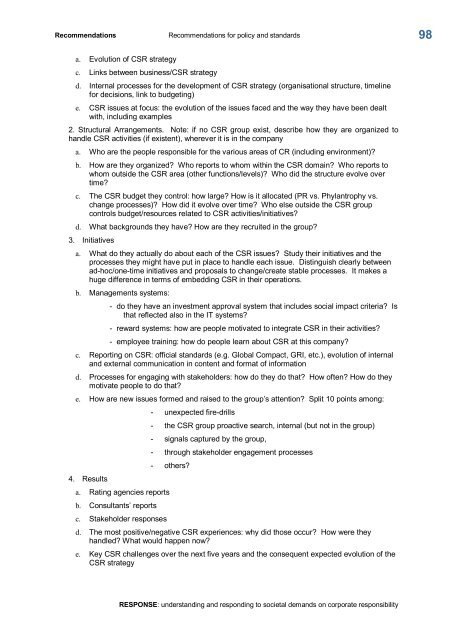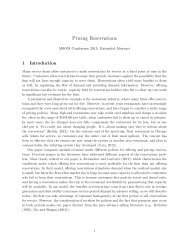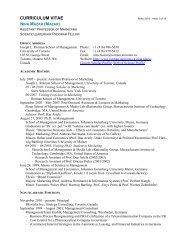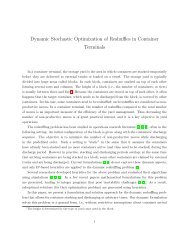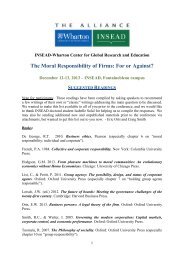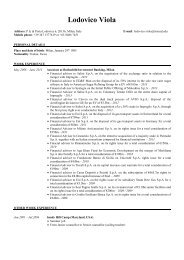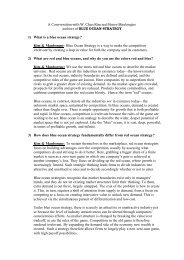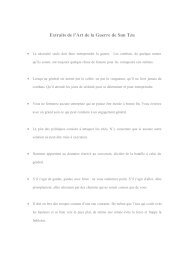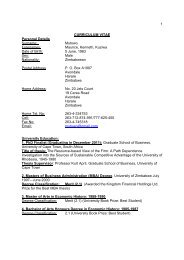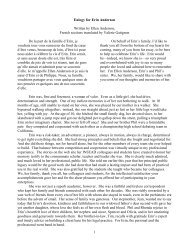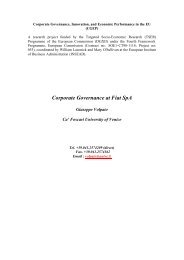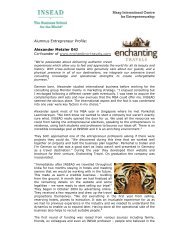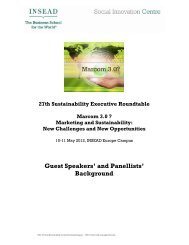RESPONSE - Insead
RESPONSE - Insead
RESPONSE - Insead
You also want an ePaper? Increase the reach of your titles
YUMPU automatically turns print PDFs into web optimized ePapers that Google loves.
Recommendations Recommendations for policy and standards<br />
a. Evolution of CSR strategy<br />
c. Links between business/CSR strategy<br />
d. Internal processes for the development of CSR strategy (organisational structure, timeline<br />
for decisions, link to budgeting)<br />
e. CSR issues at focus: the evolution of the issues faced and the way they have been dealt<br />
with, including examples<br />
2. Structural Arrangements. Note: if no CSR group exist, describe how they are organized to<br />
handle CSR activities (if existent), wherever it is in the company<br />
a. Who are the people responsible for the various areas of CR (including environment)?<br />
b. How are they organized? Who reports to whom within the CSR domain? Who reports to<br />
whom outside the CSR area (other functions/levels)? Who did the structure evolve over<br />
time?<br />
c. The CSR budget they control: how large? How is it allocated (PR vs. Phylantrophy vs.<br />
change processes)? How did it evolve over time? Who else outside the CSR group<br />
controls budget/resources related to CSR activities/initiatives?<br />
d. What backgrounds they have? How are they recruited in the group?<br />
3. Initiatives<br />
a. What do they actually do about each of the CSR issues? Study their initiatives and the<br />
processes they might have put in place to handle each issue. Distinguish clearly between<br />
adhoc/onetime initiatives and proposals to change/create stable processes. It makes a<br />
huge difference in terms of embedding CSR in their operations.<br />
b. Managements systems:<br />
do they have an investment approval system that includes social impact criteria? Is<br />
that reflected also in the IT systems?<br />
reward systems: how are people motivated to integrate CSR in their activities?<br />
employee training: how do people learn about CSR at this company?<br />
c. Reporting on CSR: official standards (e.g. Global Compact, GRI, etc.), evolution of internal<br />
and external communication in content and format of information<br />
d. Processes for engaging with stakeholders: how do they do that? How often? How do they<br />
motivate people to do that?<br />
e. How are new issues formed and raised to the group’s attention? Split 10 points among:<br />
4. Results<br />
a. Rating agencies reports<br />
b. Consultants’ reports<br />
c. Stakeholder responses<br />
unexpected firedrills<br />
the CSR group proactive search, internal (but not in the group)<br />
signals captured by the group,<br />
through stakeholder engagement processes<br />
others?<br />
d. The most positive/negative CSR experiences: why did those occur? How were they<br />
handled? What would happen now?<br />
e. Key CSR challenges over the next five years and the consequent expected evolution of the<br />
CSR strategy<br />
<strong>RESPONSE</strong>: understanding and responding to societal demands on corporate responsibility<br />
98


